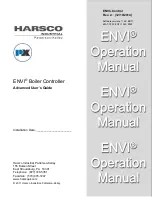
6
Example: Clicking/double clicking the button will issue scene triggers, scene 11 (button 1 click, event on), scene
12 (button double click 1, event off, single button control is used in this example)
•
Activation of central scenes (parameter 11...14 = 8, default). Z-Wave Plus introduces a new process for scene
activation – the central scene control. Pushing a button and releasing a button send a certain command to the
central controller using the lifeline association group. This allows reacting both on button push and button release.
This mode implements communication patterns 6 but requires a central gateway supporting
Z-Wave Plus.
**Communication pattern 7: Remote controls control actuators; Communication pattern 6: Remote controls cause
events in a static controller, whic
h can be uses for scene control for example
Attention: The KFOB is designed for the modern Z-Wave Plus style scene activation using "Central Scene
Command". If you want to support the legacy controllers such as VERA you need to reconfigure it for this.
Please go to
www.z-wave.info/service
to find the appropriate tutorials.
Factory Reset
The device can be set back to factory defaults without performing an exclusion process. Please execute the following
steps:
1.
Turn the device into management mode
2.
Click on button 3
3.
Keep button 4 pushed for 5
seconds. For first 5 seconds the green LED will blink, then it turns into
long-red/short-green blinking until reset is complete.
Please use this procedure only if the device is secondary controller and the primary controller is missing or otherwise
inoperable.
Behavior within the Z-Wave Network
On factory default the device does not belong to any Z-Wave network. The device needs to join an existing wireless
network to communicate with the devices of this network. This process is called Inclusion. Devices can also leave a
network. This process is called Exclusion. Both processes are initiated by the primary controller of the Z-Wave
network. This controller will be turned into exclusion respective inclusion mode. Please refer to your primary controller’s
manual on how to turn your controller into inclusion or exclusion mode. Only if the primary controller is in inclusion or
exclusion mode, this device c
an join or leave the network. Leaving the network – i.e. being excluded – sets the device
back to factory default.
If the device already belongs to a
network, follow the exclusion process before including it in your network. Otherwise
inclusion of this device will
fail. If the controller being included was a primary controller, it has to be reset first.
Please check the instructions in the quick start section how to include and exclude the device from a network.
Child Protection
The device can be turned into a child protection mode. In this mode all local operation is disabled. The child protection
mode MUST be turned on wirelessly. However in protected by sequence mode it is possible to unlock the device for
local operation by pressing any button within 5 seconds. The unlock-state will last for 5 seconds.
Wake Up Intervals – How to communicate with the device
This device is battery operated and turned into deep sleep state most of the time to save battery life time.
Communication with the device is limited.
In order to communicate with the device, a static controller C is
needed in
the network. This controller will maintain a mailbox for the battery operated devices and store commands that can’t be
received during deep sleep state. Without such a controller,
communication may become impossible and/or the battery
life time is significantly decreased.
This device will wake up regularly and announce the wake up state by sending out a so-called Wake Up Notification.
The controller can then empty the mailbox. Ther
efore, the device needs to be configured with the desired
wake up
Содержание KFOB-C
Страница 1: ...1 KFOB C Remote Control Manual 009204...





























